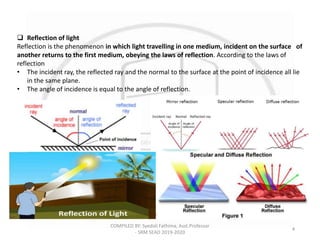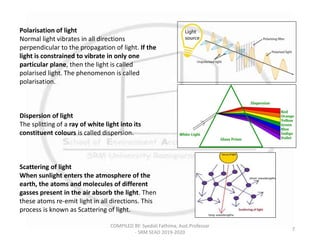The document provides information about light and lighting concepts. It defines key terms like luminous flux as the total quantity of light energy emitted per second, and luminous intensity as luminous flux per unit solid angle. It also defines the unit of illumination as lux, which is lumens per square meter. Finally, it discusses different types of lighting schemes like direct, indirect, and accent lighting and their purposes.




























































